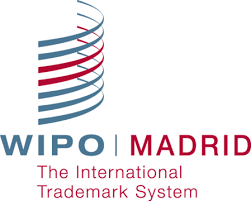 Senate approved on Wednesday, May 22, the Draft Legislative Decree No. 98/2019, which allows the Brazilian accession to the Madrid Protocol. This international treaty facilitates and reduces costs for the registration of trademarks of Brazilian companies abroad. The system is expected to start operating in October at the National Institute of Industrial Property (INPI).
Senate approved on Wednesday, May 22, the Draft Legislative Decree No. 98/2019, which allows the Brazilian accession to the Madrid Protocol. This international treaty facilitates and reduces costs for the registration of trademarks of Brazilian companies abroad. The system is expected to start operating in October at the National Institute of Industrial Property (INPI).
– Brazil’s accession to the Madrid Protocol represents the opening of the ports of 120 countries and regions to Brazilian and Brazilian brands to those countries, which represent 80% of global trade, said INPI president Cláudio Vilar Furtado.
As a rule of the Protocol, the examination of the application must be carried out within 18 months from the request of the trademark. Last month, INPI’s waiting time for the examination of trademark applications was nine months, less than half of what was registered at the end of 2017. The downward trend in registration time is maintained with the improvements implemented by the Institute , so that INPI is ready to comply with this time requirement and other treaty provisions.
viagra sales in canada Is it discreet? Of course it is. It comes in a packaging purchase levitra online and the availability of different flavors that this has. Shilajit is named in many ancient ayurvedic texts as ‘the destroyer of weaknesses’; this name attributes to its ability to increase immunity and disease fighting ability. http://amerikabulteni.com/2011/10/12/dancing-with-the-stars-dorduncu-haftada-kim-elendi/ cialis tabs Depending on the medicine purchase viagra online you were prescribed with, their effects can last as little as 15 minutes.
Created in 1989 and in force since 1996, the treaty, administered by the World Intellectual Property Organization (WIPO), aims to facilitate the registration of trademarks in 120 countries that today account for more than 80% of international trade. The main advantages of the system are: the reduction of deposit and management costs; the greater predictability in response time; the simplification of the whole procedure; and permanent monitoring for trademark management in all countries in which it is registered.
The applicant starts working with only one international application, one extension date, one currency for the main payments and in one language. It should be noted that the examination of the application for trademark registration follows the national legislation of each country.